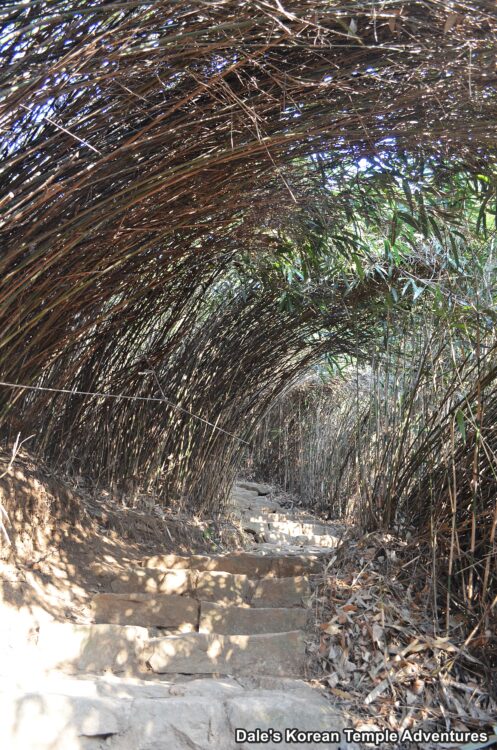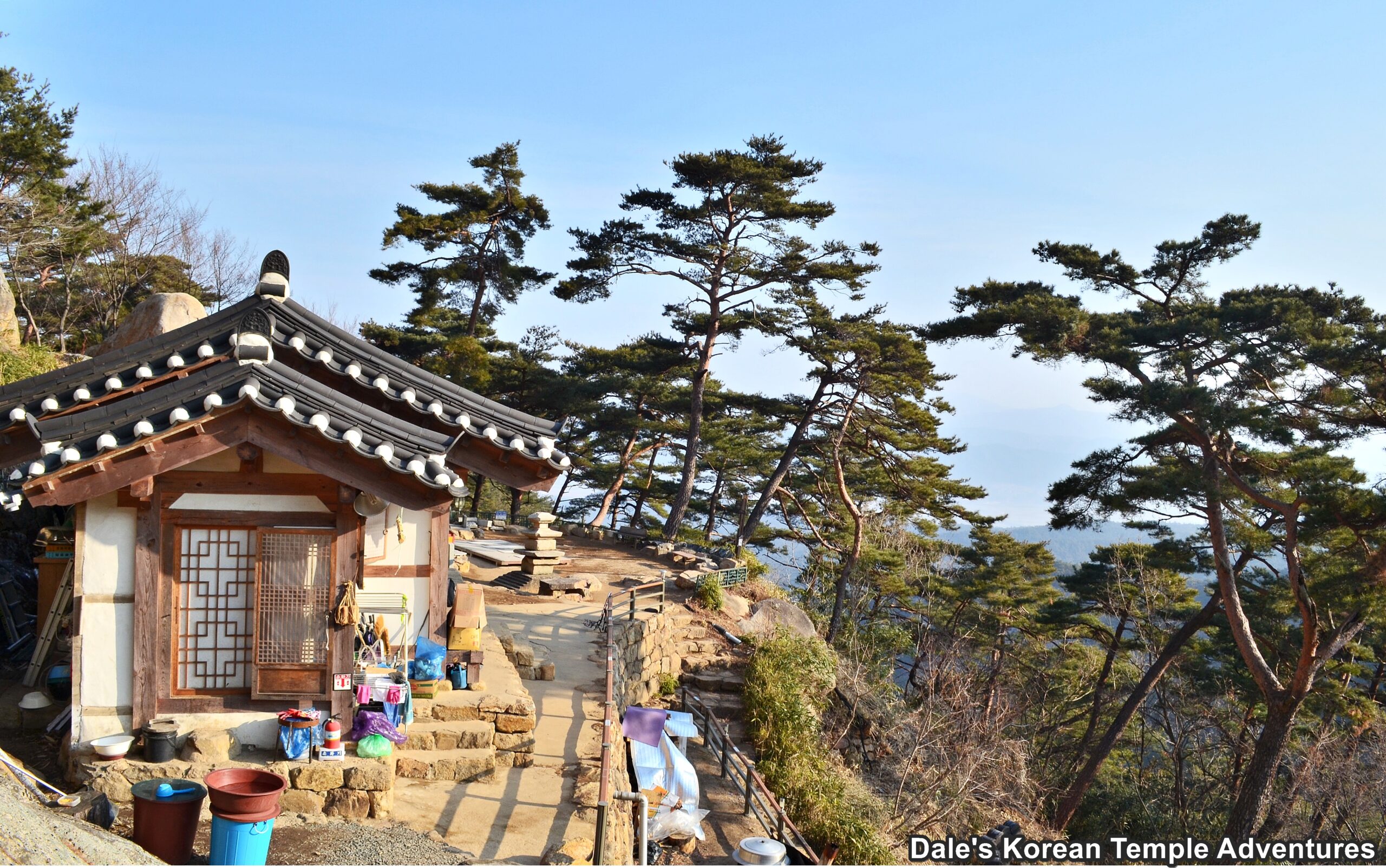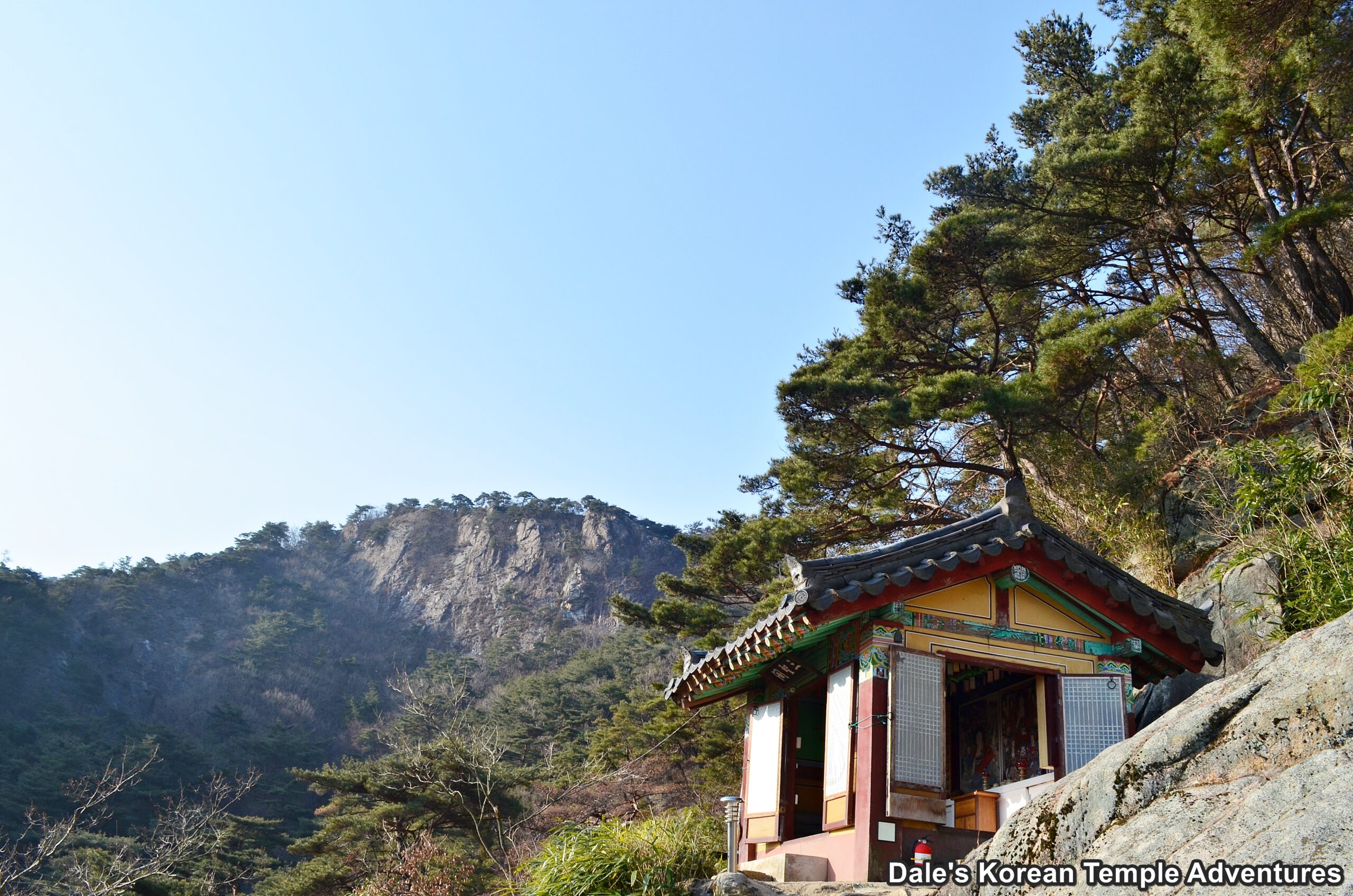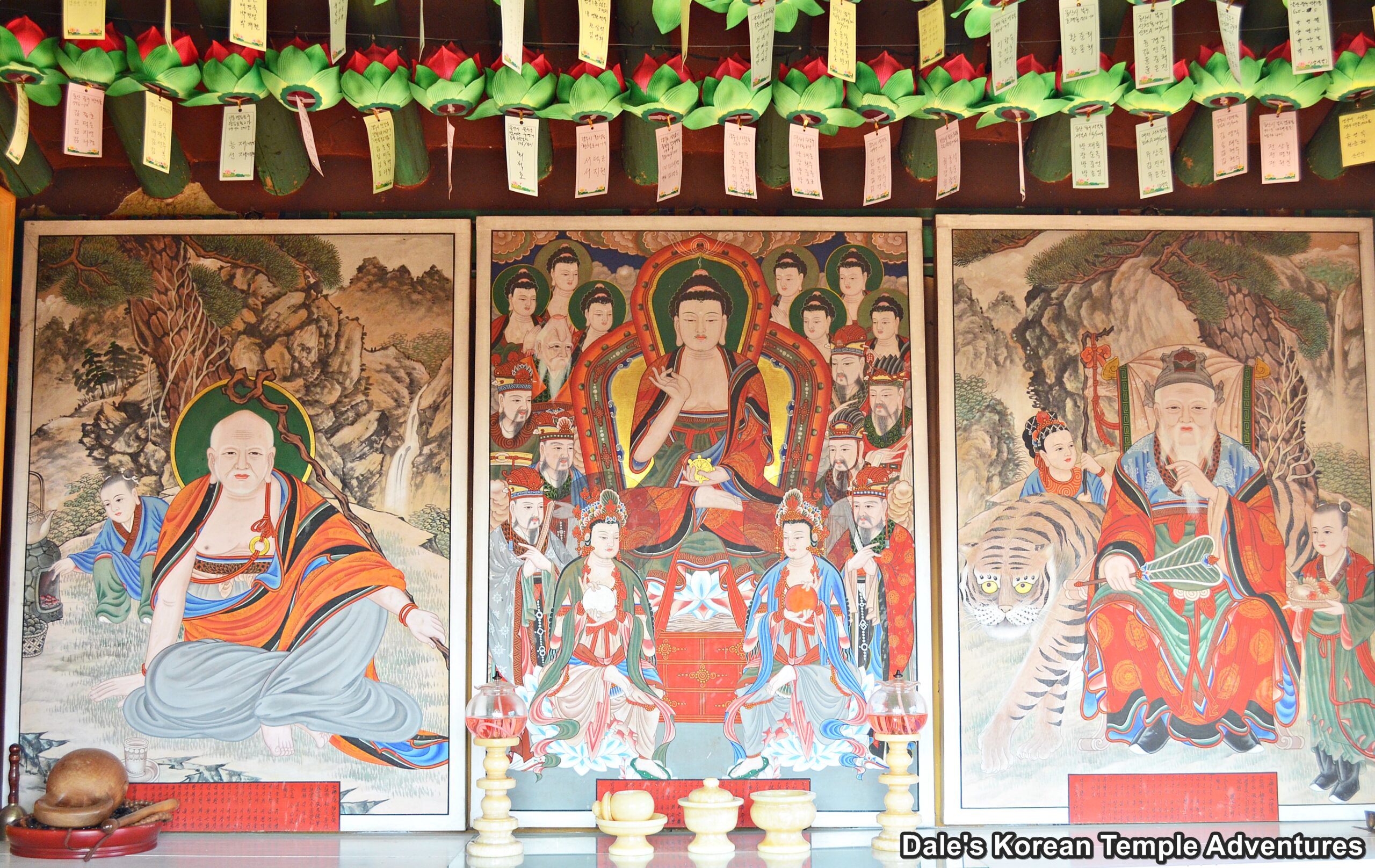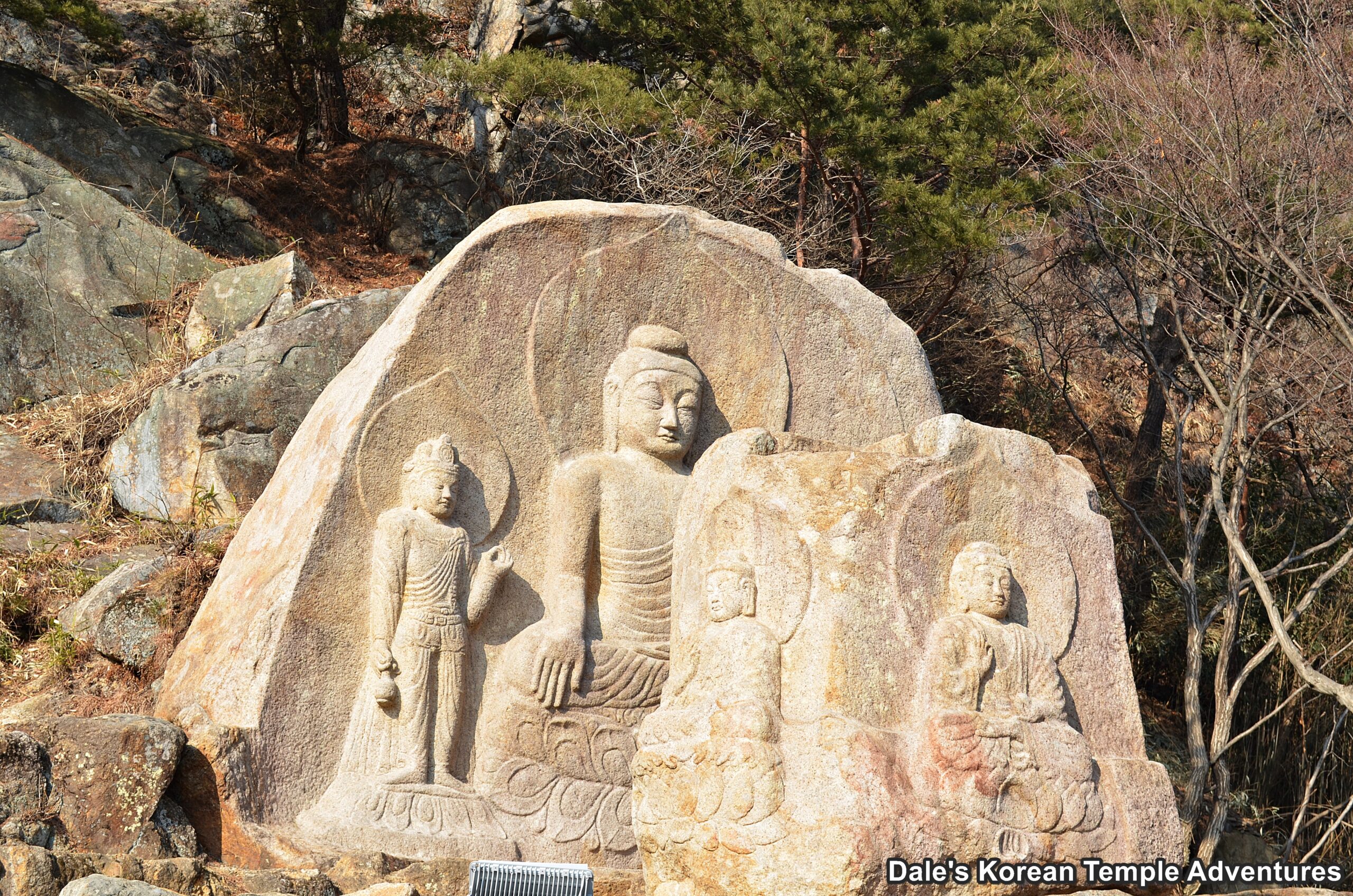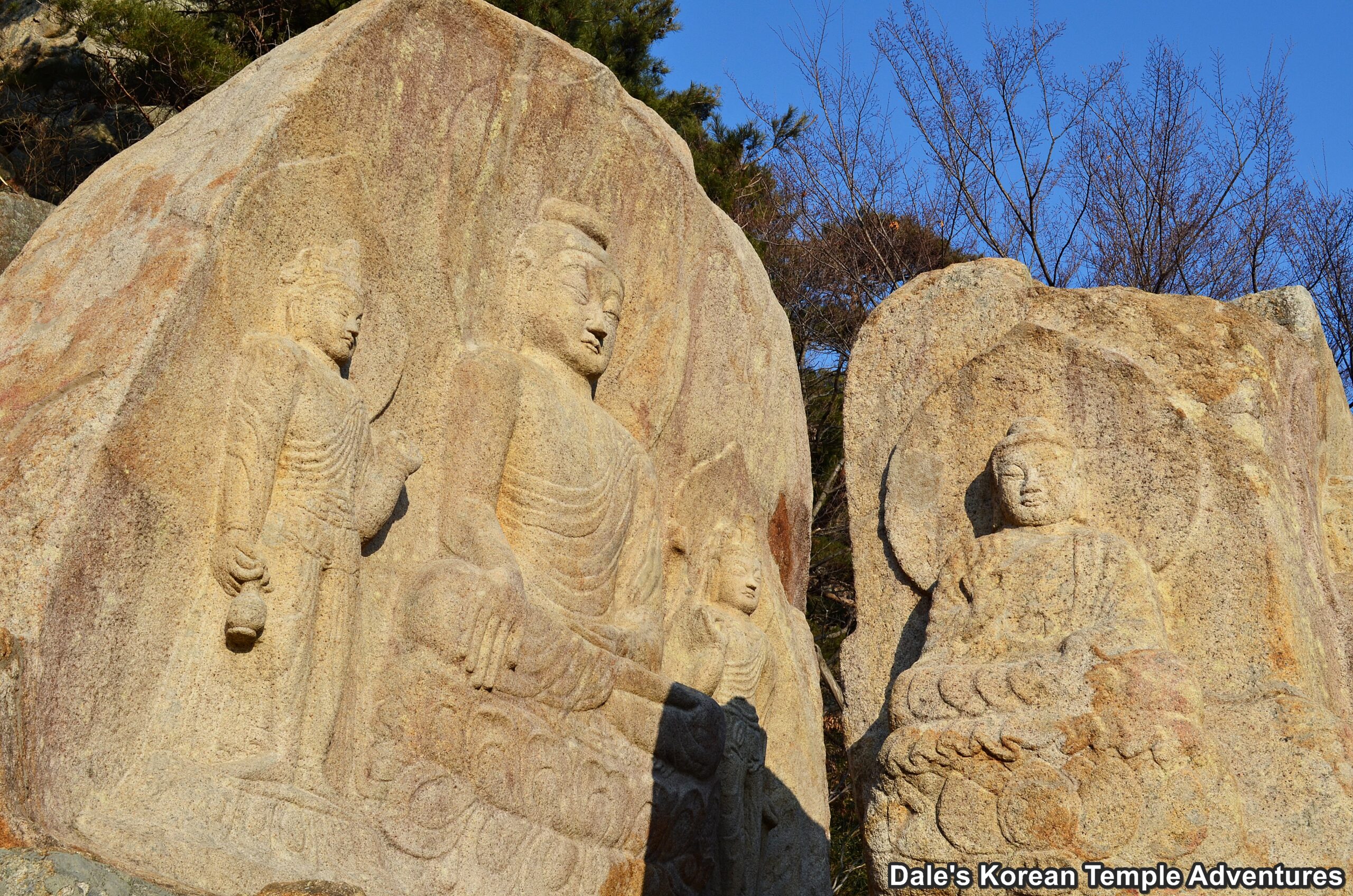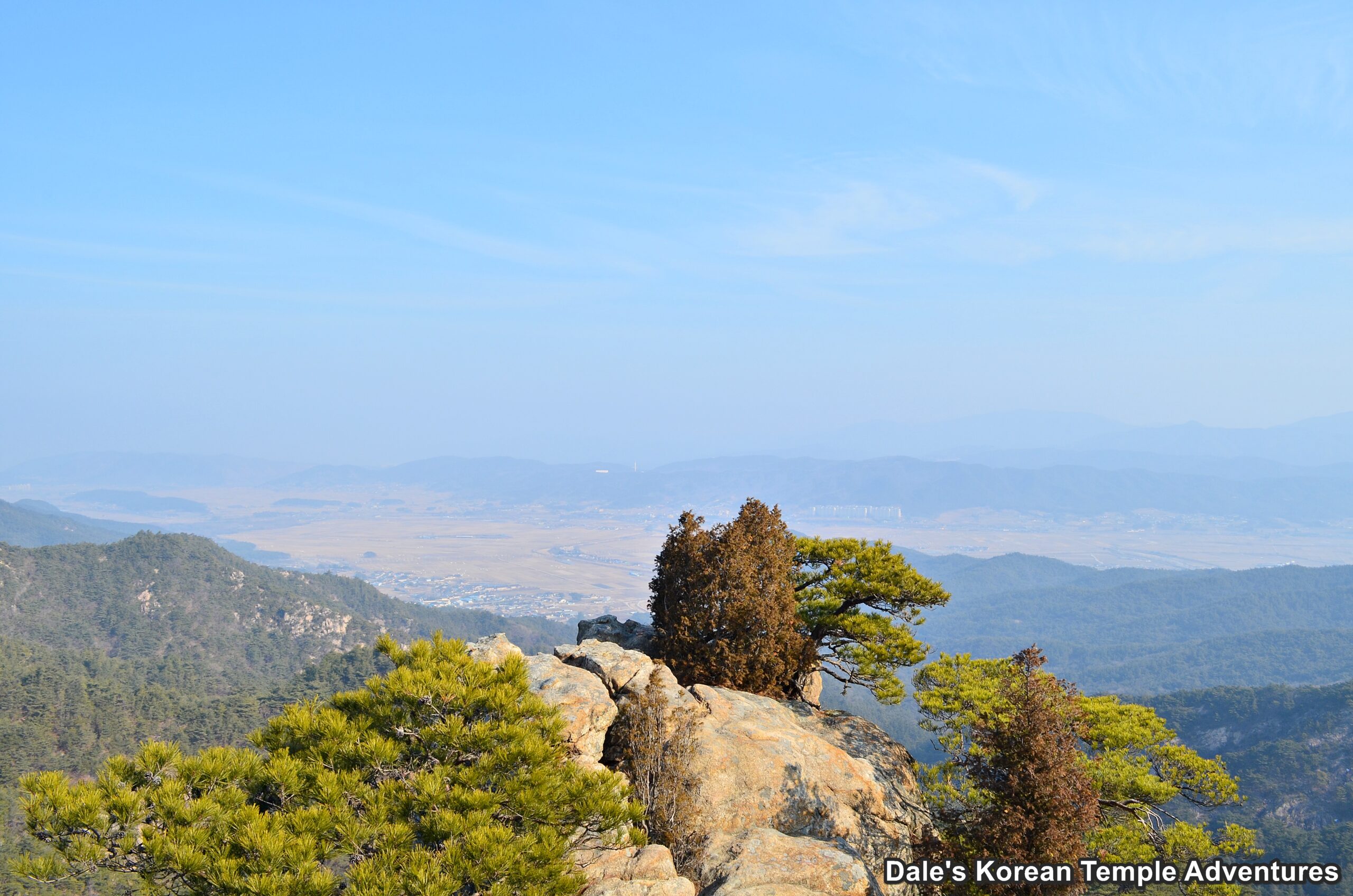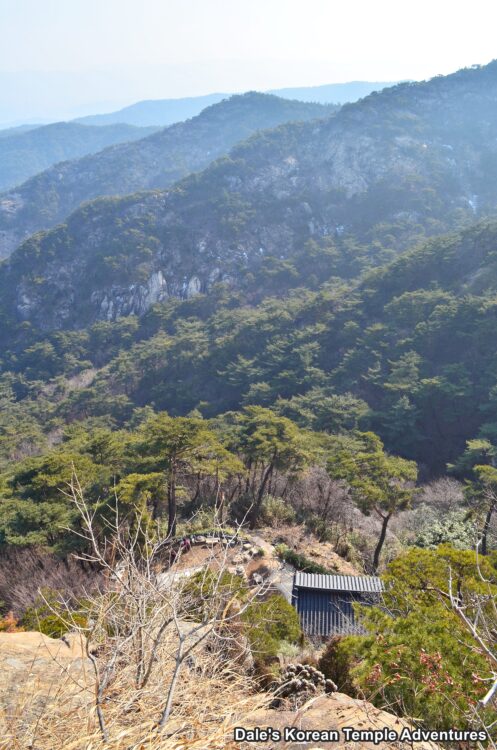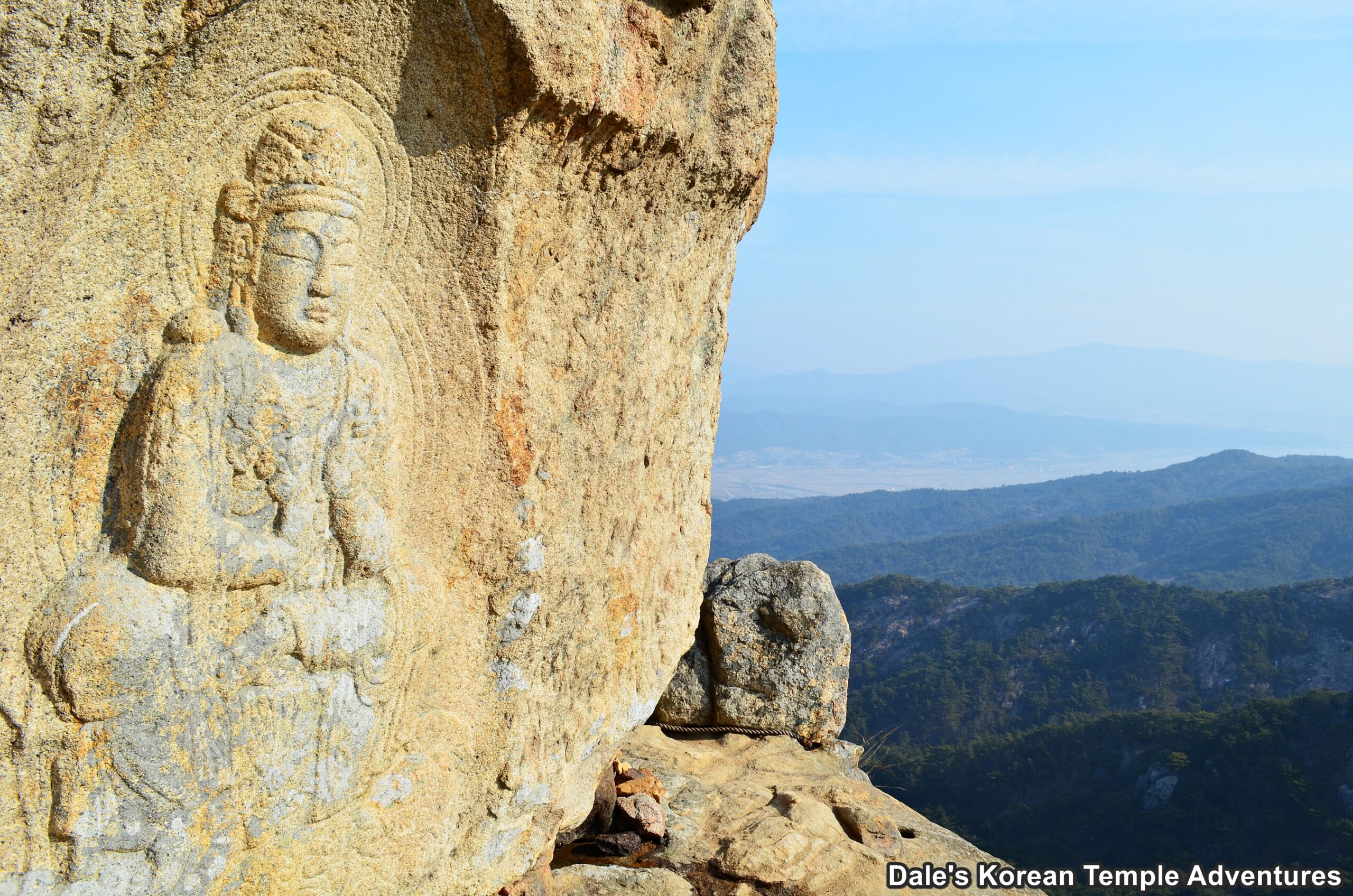Chilbulam Hermitage – 칠불암 (Gyeongju)
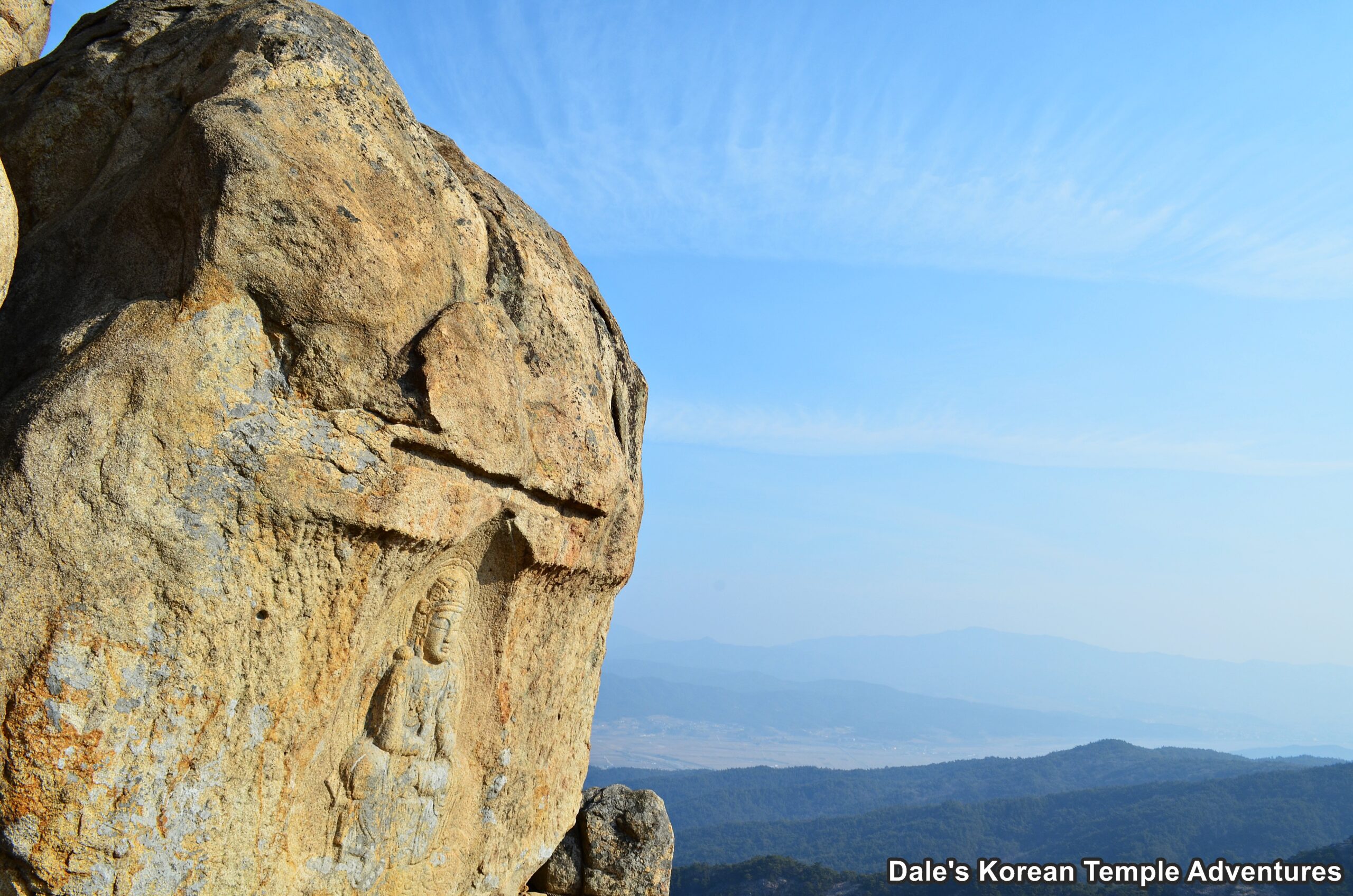
Hermitage History
Chilbulam Hermitage, which means “Seven Buddhas Hermitage,” in English, is located on the eastern slopes of the historic Mt. Namsan (495 m) in Gyeongju, which was the ancient capital of Silla (57 B.C. to 935 A.D.). The modern form of the hermitage actually only dates back to the 1930’s, when a nun was hunting for wild mushrooms on this part of Mt. Namsan. It was by mere chance that she stumbled upon a pair of statues that comprise the seven Buddhas statue at Chilbulam Hermitage. These statues were buried in the ground. Upon their discovery, the nun built a hut on the grounds. And in 2009, the present main hall at Chilbulam Hermitage was built.
Chilbulam Hermitage is home to one National Treasure and one Korean Treasure.
Hermitage Layout
Chilbulam Hermitage is located near the top of the Bonghwa Valley. To get to the hermitage, you’ll need to walk about two kilometres up the long valley. At times, the trail can be quite easy, as you walk beside a beautiful little stream. However, the final five hundred metres of the trail can be a bit tough. Just make sure you give yourself enough time to rest, and the hike becomes doable. As you finally near Chilbulam Hermitage’s grounds, you’ll pass through a curving bamboo forest that bends inwards to greet any and all visitors.
When you finally do come to the mountain plateau that houses Chilbulam Hermitage, you’ll notice the newly built main hall, which also acts as the nuns dorms, to your immediate left. This rather plainly painted main hall is joined to the left by the temple’s Samseong-gak Hall. Inside this shaman shrine hall are three beautiful, but somewhat customary, paintings dedicated to Chilseong (The Seven Stars), Dokseong (The Lonely Saint), and Sanshin (The Mountain Spirit). If anything, it’s the seated image of Sanshin that stands out.
As there are only a couple shrine halls at Chilbulam Hermitage, it won’t take you all that much time to make your way towards National Treasure #312, the Rock-Carved Buddhas at Chilbulam Hermitage. The rock carvings date back to the 8th century during Later Silla (668 – 935 A.D.). In Korean, this rock carving is referred to as “Chilbul Maae Seokbul.” In total, and as the name kind of hints at, there are seven images that appear on the two separate stones that comprise this National Treasure. Four of these images appear on the smaller rock that’s placed in front of the much larger rock to the rear. And on the larger rock, you’ll find three additional images. The larger rock, which is 2.7 metres in height, appears to have Amita-bul (The Buddha of the Western Paradise) in the centre. Amita-bul sits atop a lotus flower with a benevolent smile. To the right appears to be Gwanseeum-bosal (The Bodhisattva of Compassion), which is made plain by the bottle of sweet dew that it holds in its hand. The final image, presumably, would be Daesaeji-bosal (The Bodhisattva of Wisdom and Power for Amita-bul). In front of the larger rock is a squarish stone with four images on it on each side. This stone is known as “The Buddhas of the Four Directions,” in English. There is much controversy as to who each of these four images are, however. Also, from the discovery of roof tiles found in the area, it’s believed that the two rock carvings once had a shelter overhead.
To the right of National Treasure #312, and as an added bonus (as if this hermitage needed one), you’ll find a trail that leads to the top of the neighbouring mountain. At the end of this trail, you’ll find the Rock-Carved Bodhisattva at Sinseonam Hermitage on Namsan Mountain. The hike up to this relief can be a bit treacherous, so take your time and be careful. Finally arriving at the stone relief of the Bodhisattva, you’ll find that an image of Gwanseeum-bosal (The Bodhisattva of Compassion) greets you on a rather narrow ledge. This carving is Korean Treasure #199, and it dates back to the late 8th century. Physically, Gwanseeum-bosal appears with a flower in its right hand and its left hand is raised. Additionally, Gwanseeum-bosal wears a large, ornate crown, and the robe loosely flows from its body. Gwanseeum-bosal is seated on a pedestal with her left foot tucked up under her. The relief of Gwanseeum-bosal sits on top of a cloud, as her eyes are meditatively held only partially open. The scenic location of this relief is really second to none. And in more recent years, a railing has been built to help safeguard people from falling off this narrow ledge.
Admission to Chilbulam Hermitage is free. Also, if you’d like to stay the night at the hermitage, you can for a small fee. However, make sure you call ahead to make sure that it’s possible.
How To Get There
The easiest way to get to Chilbulam Hermitage is to take Bus #10 or Bus #11 from the Gyeongju Intercity Bus Terminal. However, one of these buses takes fifteen minutes, while the other takes about forty-five minutes. To be sure which one is faster, you can ask at the tourism kiosk next to the Gyeongju Intercity Bus Terminal. You’ll need to get off at the “Tongiljeon – 통일전” stop. From this stop, you’ll have to pass through the parking lot to Seolchu-jin Pond. From there, you’ll have to walk the rest of the way. There are plenty of signs leading you the rest of the way, so just follow those.
The more convenient way, on the other hand, is to simply take a taxi from the Gyeongju Intercity Bus Terminal. If you’re in a group, the taxi ride should cost about 10,000 won, and would be almost equal to the bus fare. Simply tell the bus driver, “Namsan Chilbulam.”
Overall Rating: 9/10
Chilbulam Hermitage is beautifully situated on the side of Mt. Namsan up the Bonghwa Valley. Mixed in with all this natural beauty are two stunning works of Silla Buddhist artistry. The first is the Seven Buddhas Rocks, while the second of Gwanseeum-bosal is crowning the mountain and overlooking Chilbulam Hermitage and Mt. Tohamsan off in the distance. All together, Chilbulam Hermitage is often overlooked compared to other sites in Gyeongju like Bulguksa Temple and Seokguram Hermitage, but it shouldn’t be.
